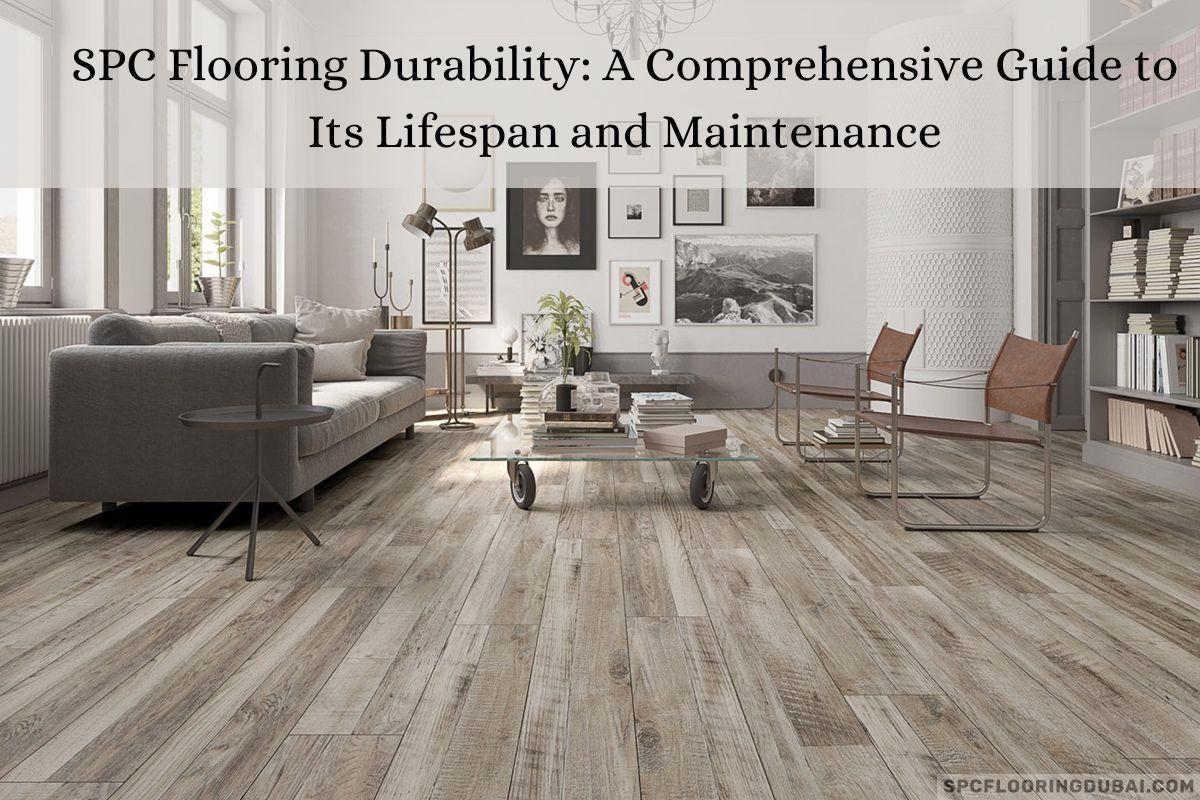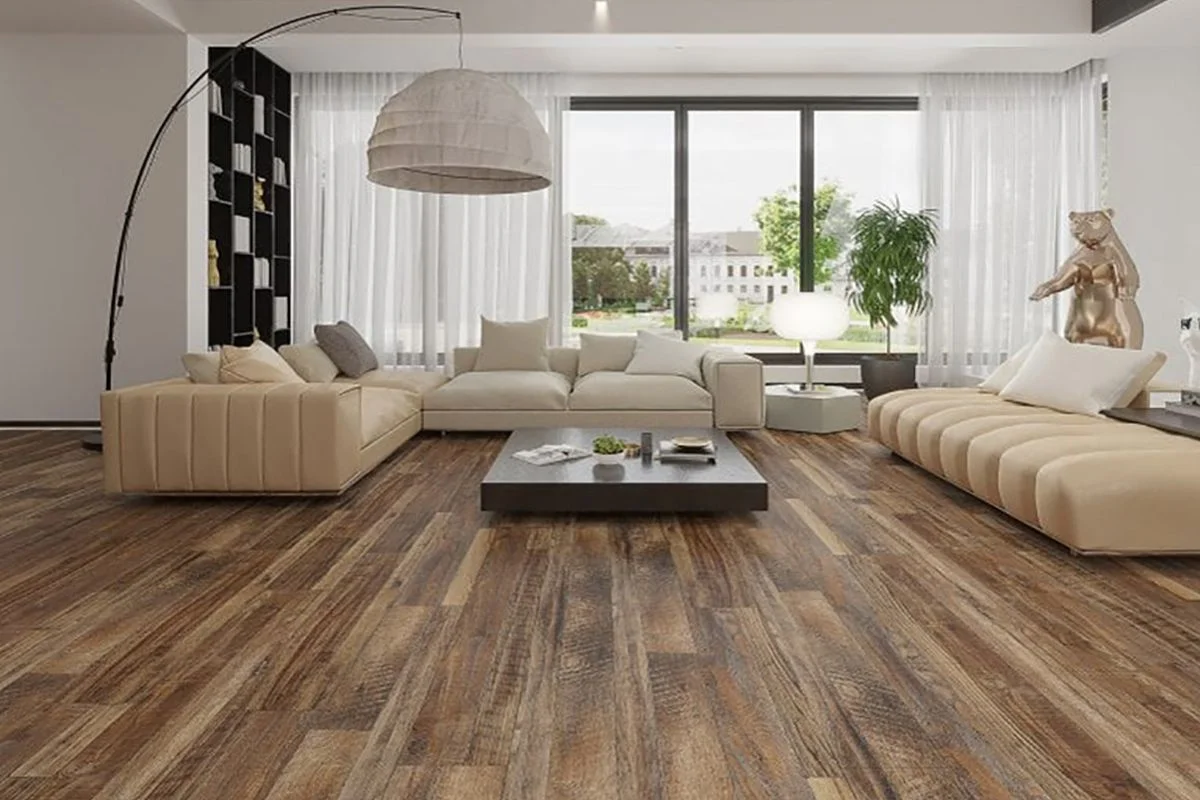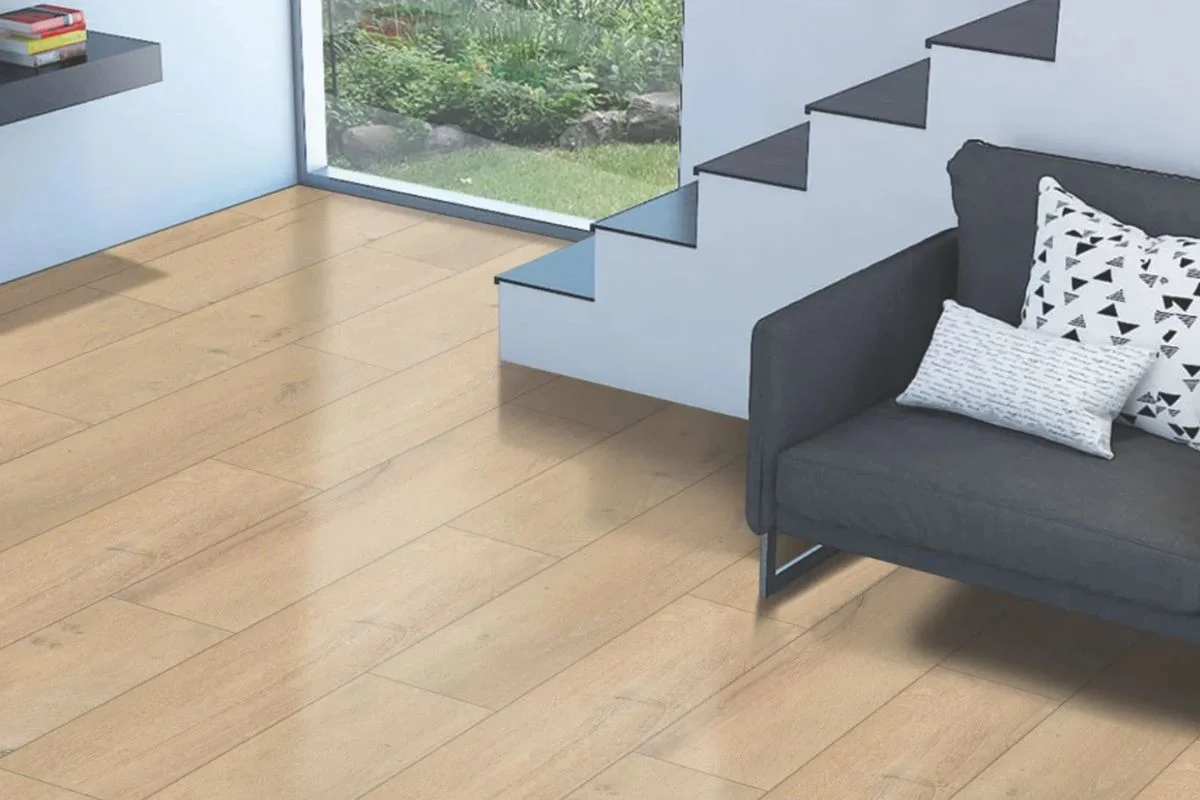
SPC Flooring Durability: A Comprehensive Guide to Its Lifespan and Maintenance
SPC (Stone Plastic Composite) flooring has rapidly gained popularity for its exceptional durability, resilience, and modern design options. Known for withstanding heavy foot traffic, moisture, and daily wear, SPC flooring is a top choice for both residential and commercial spaces. With its rigid core and waterproof features, this flooring type combines practicality with style, offering long-term value and easy maintenance. Whether you’re looking to install flooring in high-moisture areas like bathrooms or in busy rooms such as kitchens, SPC flooring provides a lasting solution. In this guide, we’ll explore what contributes to SPC flooring’s impressive lifespan and offer essential maintenance tips.
What Is SPC Flooring?
SPC (Stone Plastic Composite) flooring is a popular, resilient flooring option made from a core of limestone, polyvinyl chloride, and stabilizers, providing strength and durability. It features multiple layers, including a rigid core, wear layer, and decorative layer, which offers a wood or stone look. SPC’s solid construction and waterproof qualities make it ideal for areas with moisture or high foot traffic. Known for its stability, SPC flooring can handle temperature and humidity changes without warping. This versatility and design flexibility make SPC flooring suitable for both residential and commercial spaces where durability and style are equally important.
Why SPC Flooring Is Known for Durability
SPC flooring is renowned for its durability due to its rigid core and unique composite material. Unlike traditional vinyl, its dense core layer makes it resistant to dents, heavy impacts, and moisture, adding to its longevity. This robust structure prevents warping and cracking, even in high-traffic areas or rooms with temperature fluctuations. Its multi-layer design, including a protective wear layer, safeguards against daily wear and scratches, making it ideal for homes with pets, children, or heavy furniture. SPC flooring combines style with practical durability, maintaining its quality and appearance over the years with minimal upkeep.
Lifespan of SPC Flooring
SPC flooring is designed for longevity, with a lifespan of 15-20 years or more, depending on the quality and usage. The durable core and protective layers ensure that it withstands daily wear and tear while maintaining its appearance. Compared to other flooring options like laminate or vinyl, SPC flooring typically offers greater resilience and durability. When installed in appropriate settings and maintained well, SPC flooring can even exceed its expected lifespan, making it a cost-effective choice. Its longevity is a primary reason homeowners and businesses prefer SPC flooring for high-traffic or moisture-prone areas.
SPC Flooring’s Water and Moisture Resistance
One of the standout qualities of SPC flooring is its waterproof nature, making it an excellent choice for moisture-prone areas. Unlike hardwood or laminate, SPC flooring can handle high humidity and spills without swelling or warping. The dense core and protective wear layer ensure that water cannot penetrate the surface, making it perfect for kitchens, bathrooms, and basements. This moisture resistance adds to its durability and requires less frequent replacements or repairs. As a low-maintenance, water-resistant solution, SPC flooring is an ideal choice for spaces that experience frequent water exposure or spills.
Scratch and Stain Resistance
SPC flooring features a wear layer that effectively protects against scratches, stains, and daily wear, making it highly resilient. This layer acts as a barrier, keeping the decorative design intact even in busy households with kids and pets. Unlike hardwood, which can easily scratch, SPC flooring withstands most daily impacts without showing damage. Additionally, it resists stains from spills or accidental messes, maintaining its look over time. This scratch and stain resistance makes SPC flooring a great option for homes, as it requires less attention and touch-ups than many other flooring types.
SPC Flooring Maintenance Tips
Maintaining SPC flooring is simple and requires minimal effort. Regular sweeping or vacuuming removes dirt and debris, while occasional damp mopping keeps it clean and fresh. Using a neutral cleaner designed for SPC or vinyl flooring is recommended to avoid any damage to the wear layer. Avoiding harsh chemicals and abrasive tools will further preserve its quality. Additionally, placing doormats at entryways can reduce dirt and prevent scratches. With these straightforward maintenance steps, SPC flooring can look new for years, making it an attractive option for homeowners seeking low-maintenance flooring.
Preventive Measures to Extend Lifespan
To extend the lifespan of SPC flooring, it’s beneficial to use preventive measures like adding furniture pads to heavy items to avoid dents. Placing rugs in high-traffic areas, such as entryways and hallways, also helps protect the floor from excessive wear. Doormats at entrances reduce the amount of dirt and moisture that can be tracked in, further safeguarding the surface. Regular cleaning and using appropriate products are essential to keep the wear layer intact. By taking these preventive steps, you can maintain the look and durability of SPC flooring for years, maximizing its investment.
Comparison: SPC Flooring vs. Other Durable Flooring Options
Compared to other durable options like vinyl, laminate, and tile, SPC flooring stands out for its rigid core and waterproof features. While vinyl is also resilient, SPC’s stone composite core adds durability and stability, especially in areas with temperature fluctuations. Laminate lacks the waterproof quality of SPC, making SPC preferable for kitchens and bathrooms. Tile is extremely durable but requires more maintenance and is often colder underfoot. SPC flooring strikes a balance, offering durability, water resistance, and comfort, making it a versatile option for those looking for a stylish, easy-to-maintain, and long-lasting flooring choice.
Best Areas to Install SPC Flooring
SPC flooring is ideal for many areas in both residential and commercial spaces due to its durability and waterproof properties. In homes, it’s perfect for kitchens, bathrooms, laundry rooms, and basements, where water resistance is essential. For commercial spaces, SPC is suitable for retail stores, offices, and restaurants where there’s high foot traffic. Its scratch-resistant surface makes it viable for pet-friendly homes and family areas. The rigid core withstands temperature changes, so it’s also a good option for sunrooms. Overall, SPC flooring’s adaptability makes it a smart choice for nearly any room or space.
Eco-Friendliness and Sustainability of SPC Flooring
SPC flooring is often considered an eco-friendly choice, as it contains no formaldehyde and emits low VOCs (volatile organic compounds), promoting better indoor air quality. Many manufacturers prioritize sustainable practices, such as using recyclable materials or production methods that reduce waste. Although not biodegradable, some SPC flooring products are recyclable at the end of their life cycle. Compared to traditional hardwood, SPC’s synthetic materials contribute to less deforestation. For environmentally conscious homeowners, SPC flooring provides a durable, sustainable alternative that balances performance with a reduced environmental footprint.
Repair and Replacement Considerations
SPC flooring is built to last, but if damage occurs, individual planks can often be replaced, saving costs on full replacements. In case of scratches or dents, some SPC options offer surface repair kits, allowing homeowners to fix minor issues themselves. Thanks to its click-lock installation system, damaged planks can be replaced without disrupting the entire floor. However, matching colors exactly may be challenging over time as styles change. While repairable to some extent, SPC flooring generally requires less frequent repair compared to softer materials, making it a practical choice for long-term use.
Cost vs. Longevity: Is SPC Flooring Worth the Investment?
SPC flooring’s initial cost may be higher than vinyl or laminate, but its durability and low maintenance make it a cost-effective option in the long run. The high lifespan and minimal upkeep mean fewer repairs and replacements, leading to potential savings over time. Its resilience in high-traffic areas and moisture-prone spaces justifies the investment, especially when compared to the upkeep required for hardwood or laminate. For those seeking a durable, waterproof, and stylish flooring option, SPC flooring offers value that balances upfront costs with long-term benefits, proving to be a smart investment.
Conclusion
In conclusion, SPC flooring offers a robust, versatile, and stylish solution for many environments, particularly those with heavy foot traffic or moisture exposure. Its durability, water resistance, and low-maintenance qualities make it an appealing choice for homeowners and businesses alike. With minimal upkeep, SPC flooring can last for decades, providing excellent value for its cost. Its rigid core and scratch-resistant wear layer add to its longevity, making it a practical investment for those seeking a flooring option that balances aesthetics with functionality. Overall, SPC flooring is a reliable, long-lasting choice that delivers comfort, resilience, and design flexibility to suit various spaces.





0 comments